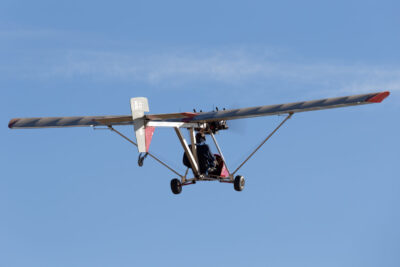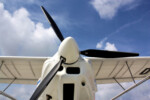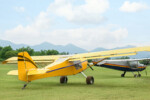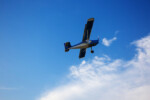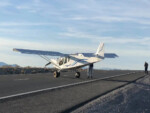How High Can An Ultralight Fly?
29 April 2023 | Updated on February 05, 2024
Although the definition of an ultralight varies per country, aviation experts consider it a lightweight recreational or experimental aircraft with limited flight performance. People who prefer to fly cheap, uncomplicated, and fun to fly aircraft use ultralights for various purposes, including recreational flying, aerial photography, and low-altitude sightseeing.
Ultralights offer people the freedom to fly without having a pilot’s license, and unlike general aviation aircraft, ultralights are free from most Federal Aviation aircraft certification, maintenance, and inspection requirements. However, the freedom to operate a lightweight experimental aircraft unencumbered by most federal and local aviation regulations involves a personal responsibility to know your aircraft’s limits and capabilities and understand the federal rules regarding ultralight flight operations in the United States.
How high an ultralight can fly is a common debate among ultralight owners and enthusiasts, and the answer depends on several factors that we shall explore in this article.


How high can an ultralight fly?
Let us be clear, ultralights are not designed for high-altitude flights; their tiny 55hp engines and minimal fuselage design make anything other than leisurely low-level cruising a stretch. However, you shouldn’t turn up your nose at one because they can reach relatively high altitudes in the right conditions with an experienced pilot at the controls.
Most ultralights have a maximum altitude of around 10,000 feet above sea level, while special-purpose ultralight vehicles can surpass 19,000 feet in the right weather conditions. A few brave souls have set altitude records of over 30,000 feet in unpowered gliders and balloons.
On 29 August 2006, a sailplane by Steve Fosset and Einar Enevoldson soared to 50,671 feet (15,460m) to set the highest altitude record for a glider. Also, on August 3, 2019, Aleksander HirsztrittA, a Polish pilot, set a new world record by reaching an altitude of over 6,000m (19,685 feet) in a powered trike.
You should know there is a difference between how high you can fly an ultralight and how high you are legally allowed to fly an ultralight. Let us find out what the regulations say.
According to the Federal Aviation Authority (FAA), ultralights are required to fly 500 feet below standard air traffic patterns and have a minimum altitude of 500 feet above ground level (AGL).
A section of the Federal Aviation Authority 14 CFR Part 103 regulations restrict ultralight flight operations in certain airspaces limiting their flight altitudes. Other sections of the Part 103 regulations impose altitude restrictions on ultralight pilots, preventing them from high-altitude flight operations.
Examples of these regulations include:
1. § 103.17 Operations in certain airspace prevent ultralights from operating within certain airspaces, especially around busy airports, without permission. Although many ultralight pilots can and often fly their vehicles within the altitudes covered by these airspaces. When flying near towered airports, they require approval from air traffic control officials (rarely granted).
The list of prohibited airspaces for ultralight flight operations includes:
- Class A airspace (from 18,000 feet Mean Sea Level MSL)
- Class B airspace (up to 10,000 feet above ground surface)
- Class C airspace (up to 4,000 feet MSL from the ground surface)
- Class D airspace (up to 2,500 feet from the ground surface).
2. §103.21 Visual reference with the surface is a set of regulations mandating ultralight pilots to maintain visual contact with the ground during ultralight flight operations. Ultralight pilots must maintain sufficient altitude, allowing them to see outside the cockpit and navigate using landmarks while visually avoiding obstructions and other aircraft.
Ultralight types and their maximum altitude
Ultralight aircraft, by definition, is a lightweight single-seat or two-seater experimental aircraft with less than 254 pounds (115kg) empty weight, a maximum fuel tank capacity of 5 U.S gallons (19 liters), and a maximum speed of more than 55 knots. Ultralight vehicles have different classes and types, each with unique flight performance and handling characteristics.
Below are the maximum altitudes of the different ultralight types.
Hot air balloons
Hot air balloons can soar between 1,000 to 3,000 feet in excellent weather conditions. However, the legal maximum altitude of a hot air balloon is 3,000 feet in many countries. The world altitude record for a crewed hot-air balloon flight is 69,850 feet (21,290m) by Vijaypat Singhania in November 2005.
Powered fixed-wing aircraft
Fixed-wing or 3-axis ultralights are among the most desirable and best-performing ultralight types. Their faster airspeed offers a fast-climbing advantage, easily propelling them beyond 10,000 feet. Some fixed-wing ultralight models can operate at altitudes of over 28,000 feet (8,800m).


Powered parachutes and gliders
Powered gliders can fly over 10,000 feet, but most pilots do not attempt to fly at those altitudes because it is hazardous. The FAA restricts powered gliders to 18,000 (5,500m) feet in the United States. The world altitude record for powered gliders is 24,898 feet (7,589m), set by Ramon Morillas Salmeron in September 2009.
Powered parachutes can attain altitudes as high as 10,000 feet in clear weather conditions. However, typical operating altitudes range between 500 – 1,500 feet above ground level.
Trikes
Weight/shift trikes are popular ultralight types with flex wings suitable for extended flight operations. Trike pilots can fly up to 10,000 feet without requiring oxygen; however, flying at higher altitudes requires having an oxygen supply. Aleksander HirsztrittA, a Polish ultralight pilot, holds the world record for flying at an altitude of over 6,000m (19,685 feet) in a powered trike.
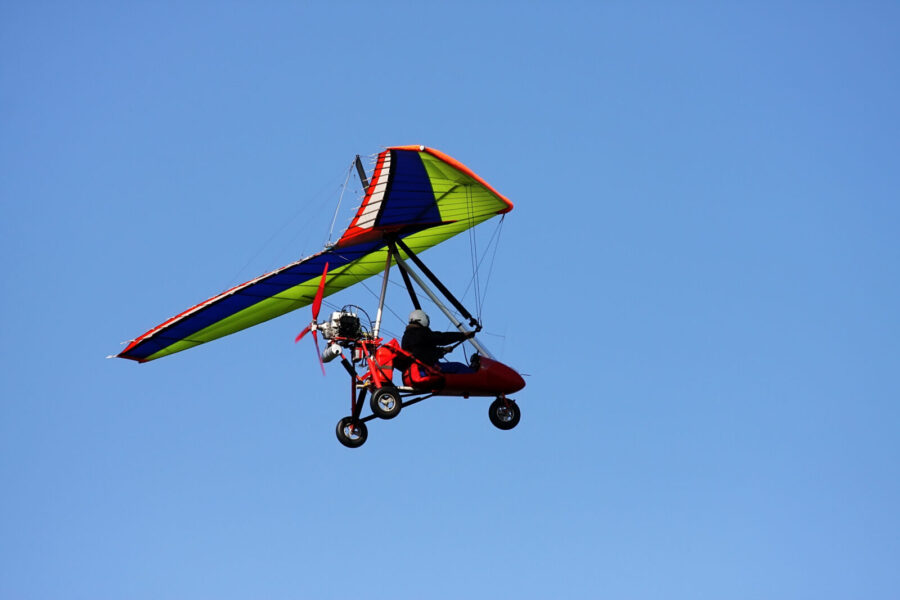

Unpowered gliders and sailplanes
Sailplanes or gliders are non-powered ultralight aircraft that use rising air currents to gain altitude. They can fly up to 20,000 feet; under the right conditions and equipment, a sailplane or glider can fly up to 32,000 feet. The world record for the highest glider flight was set by Steve Fossett and Einar Enevoldson, whose modified DG505m glider flew at 50,727 feet (15,445m) in August 2006.
Factors affecting how high an ultralight can fly
Are you hoping to take your new ultralight vehicle to great flights? Then you should know that how high you can fly depends on the following factors: your engine power, weather conditions, ultralight design, and weight. Your flying skills are critical because, well, let’s just say your life depends on it.
- Engine power – how much power your engine makes will determine your ultralight climb rate. If your engine produces lots of power, your ultralight climbs faster to reach the desired altitude. Every rookie pilot knows engines with low power output have a slower climb rate, limiting how high an ultralight can fly.
- Weather conditions – are an important factor influencing how high you can fly your ultralight vehicle. Extreme atmospheric conditions like turbulent or gusty winds can impair an ultralight’s flight direction and performance, making the aircraft unstable and preventing high-altitude flight.
- Ultralight design – generally, large-winged ultralights with an aerodynamic enclosed cockpit design fly at higher altitudes than smaller-winged ultralights with an open cockpit design. For example, the aerodynamic design of sailplanes and gliders with large wings allows them to fly at higher altitudes with virtually no powerplant than trikes or fixed-wing ultralights.
- Weight – An ultralight’s weight combines the pilot’s body weight, fuel, and extra equipment. Heavier ultralights experience decreased climb performance because less reserve power is available to gain altitude. And the less weight an ultralight has, the easier it gains altitude.
- Pilot skills – is the sum of all the factors affecting how high an ultralight can fly. A skilled pilot with considerable ultralight flight experience is more prepared for the challenges of high-altitude ultralight flight operations and less likely to make fatal mistakes.
What are the risks of flying an ultralight at high altitudes
High-altitude flight operations can have potentially deadly consequences for both men and the aircraft. And the risks of flying too high are magnified in a lightweight ultralight with less structural reinforcements and minimal safety equipment than in a conventional airplane.
These risks associated with flying at high altitudes range from health issues, including the pilot losing consciousness due to oxygen starvation, to mechanical or aircraft structural failure.
A few of those include:
- Low oxygen levels – ultralight pilots exposed to thinner, low-oxygen air at higher altitudes can experience hypoxia, a condition caused by a lack of oxygen in the bloodstream. Symptoms of hypoxia include dizziness, disorientation, and loss of consciousness. Conventional aircraft have cabin pressurization systems preventing this condition during high-altitude flights, ultralights are not pressurized, and pilots must carry supplemental oxygen when flying over 10,000 feet.
- Icy conditions – the extreme drop in temperature at high altitudes can create icy conditions causing an ultralight vehicle’s wings to freeze when flying at high altitudes. When this happens, the pilot loses maneuverability, and the ultralight vehicle may enter a spin and crash.
- Turbulence – encountering high altitude turbulence can cause severe structural damage or reduce the pilot’s ability to control the aircraft safely.
- Exposure – open cockpit ultralight vehicles offer no protection from freezing conditions at high altitudes. Unprotected pilots could potentially develop hypothermia and other related health issues due to exposure.
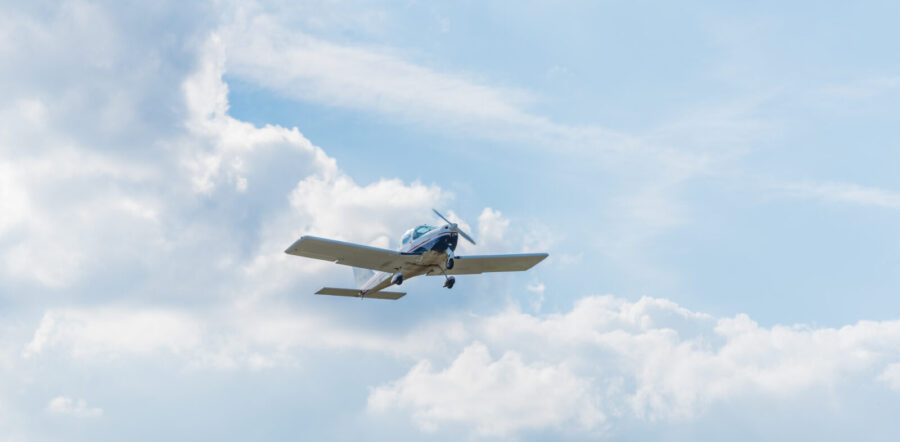

Can an ultralight fly over restricted airspace?
Exploring new places with your ultralight is a fun and adventurous way of discovering new things. You can see low-level panoramic views of beautiful scenery, including unique bird-eye perspectives of spectacular landscapes, beaches, mountains, and forests. However, without prior permission from a controlling agency or jurisdiction, you can not operate an ultralight vehicle in prohibited or restricted areas, including areas designated by notice to airmen.
In addition, eCFR §103.17 Operations in certain airspace restricts ultralight vehicles from flying within Class A, Class B, Class C, or Class D airspace or within the lateral boundaries of the surface area of Class E airspace designated for an airport unless the pilot has prior approval from the ATC facility controlling that specific airspace.
Safety considerations when flying an ultralight at high altitudes
Operating an ultralight at high altitudes is an exciting experience, but it requires detailed preparations, including an excellent understanding of your aircraft’s performance and weather conditions. Prioritizing safety is essential if you intend to survive a high-altitude ultralight flight.
Below are some safety considerations to keep in mind:
- Oxygen supply – carrying a supplementary oxygen supply with you when flying an ultralight at high altitudes is a great idea. Since air pressure drops with each altitude increase, there is significantly less oxygen at around 10,000 feet above sea level, causing blood oxygen levels to drop considerably in pilots breathing unassisted. Civil aviation authorities in the United States recommend that pilots use supplementary oxygen when flying above 10,000 feet to prevent hypoxia, a condition affecting pilots’ coordination, vision, and judgment.
- Ballistic parachute – installing a ballistic parachute system on your ultralight may not prevent a catastrophic mechanical failure, but it can prevent fatal injuries when your ultralight crashes. Parachutes are critical safety equipment worth considering on any high-level altitude ultralight flight.
- Airspace restrictions – ultralight airspace restrictions vary per country, and you should understand the limits in your area. In the United States, ultralights may fly up to 18,000 feet without approval from ATC officials. However, it is a good idea to check your local aviation regulations.
- Ultralight altitude limits – understand your aircraft altitude limit, and do not attempt to operate your aircraft beyond the manufacturer’s recommended limits.
- Be visible to other aircraft – your chances of running into other aircraft are greater when flying at high altitudes. You can prevent a potential collision or near-miss by alerting other airspace pilots of your presence by filing a notice with ATC or through electronic aids or other devices. We also recommend you remain vigilant and ensure your visibility is not compromised.
- Icy conditions – wearing appropriate clothing is essential when flying in freezing high altitude conditions in an ultralight. Ultralight pilots should consider warm insulated clothes to prevent hypothermia and cold.
- Weather – monitoring weather forecasts for extreme weather conditions prevalent in high altitudes is crucial. Also, turbulence and gale-force winds are expected at higher altitudes, and pilots must be prepared to adjust their flight plans when necessary.
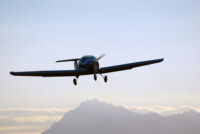

Learn more
How Much Does An Ultralight Cost?
Conclusion
High-altitude ultralight flight is a once-in-a-lifetime experience offering unmatched thrills and excitement. However, reaching your desired altitude depends on various factors, including flying skills and weather conditions. Careful preparation is the difference between surviving the flight and not. Overall, you should stay alert, prioritize safety, and enjoy the views from above.




















